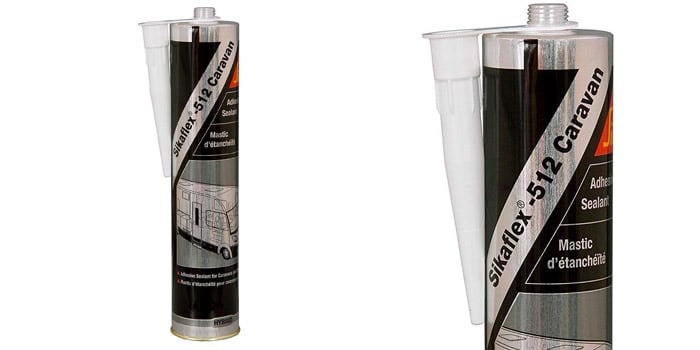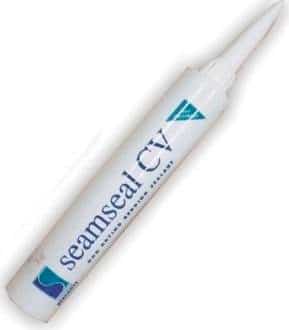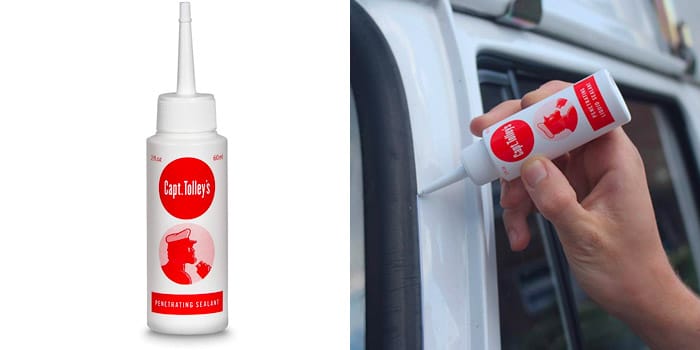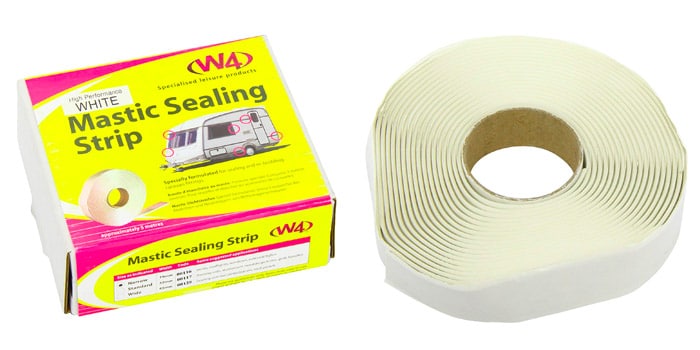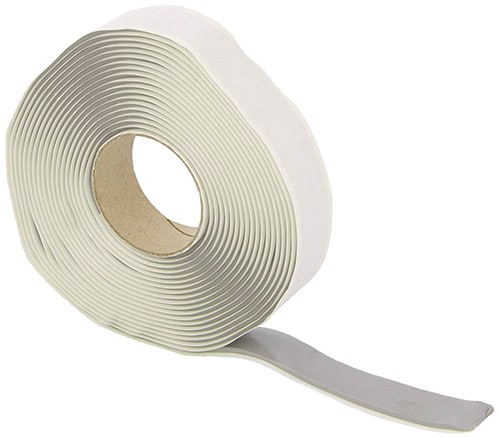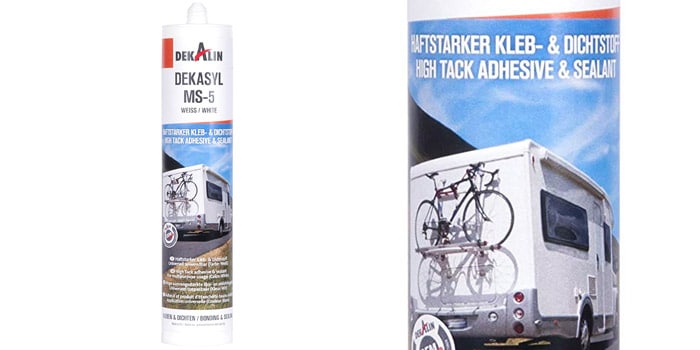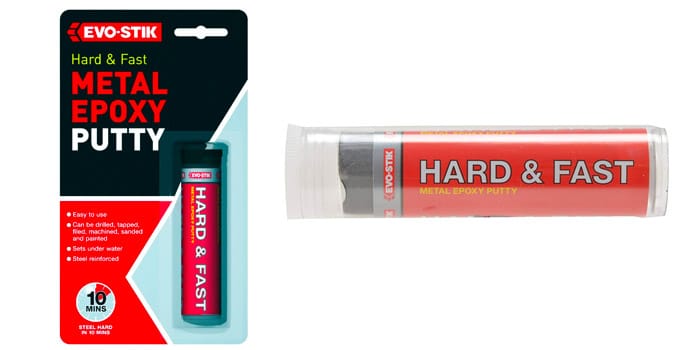What do you do when you spring a leak in your caravan, motorhome or campervan? Rather than calling out an expert, a small leak may be quick and easy to deal with on your own using caravan sealant. It’ll certainly cost you less, that’s for sure.
If you’re new to the world of caravans or have never had a problem with leaks in the past, it’s possible you’ve never given much thought to caravan sealants. With all the different things you must purchase when you tow a caravan, sealants may seem like one that is unnecessary until you have a problem.
In the following post we are going to look at why they are used, the different types available and why it’s important to have them before you need them. We will also help you find the right one for your caravanning needs, by highlighting what we feel are the best ones available to buy right now.
Table of Contents
Caravan Sealants – Our Top Choices
Sikaflex is an incredibly popular range of adhesives and sealants from the huge company Sika. This is a name that always gets mentioned when caravan repairs are spoken about, so it would have been silly of us not to highlight some Sikaflex products on this list.
Notably, Sikaflex 512 has been approved officially by the National Caravan Council, so you know it’s a high-quality product. This is a mastic-style adhesive and bonds and seals in one. It does not shrink and can be used to bond materials that are different from each other. As it’s waterproof so can be used for interior and exterior applications. This is one that people recommend for a caravan awning rail sealant.
From Hodgsons, a company with over 50 years in the industry, comes this mastic that is ideal for working with metal joints. It’s ideal for door frames, windows, rails, mouldings and bedding seams in caravans. High-quality and has a solvent-release cure. Although it works best with metals and coated metals it will give good adhesion to various surfaces and provides brilliant water and weather-resistance.
Captain Tolley’s is another great product that can penetrate deep narrow cracks, to fill them and make them secure. Although it comes out of the tube white, it dries clear, so is perfect even for the more visible cracks on your caravan. One of the best things about it is because it is water-based it basically follows the same routes along hairlines cracks and other similar issues and fills them up quick and easily.
It is waterproof, so can be used on the interior and exterior of your caravan.
W4 is a manufacturer who specialises in producing accessories and products for leisure vehicles like caravans and motorhomes.
This W4 mastic sealing strip is a 5m reel of 19mm wide mastic that has been formulated to use as re-bedding and sealing various parts of your caravan or leisure vehicle including as a caravan external sealant on trims, window surrounds, vents, roof lights, roof vents, awning rails and overlap joints.
An incredibly fast, easy and effective product to use on all kinds of cracks and leaks, the caravan roof, anywhere including as a caravan a skylight.
This is the white version of this product
This is the exact same product as above, with the only difference being the colour. This mastic sealing strip is the off-white version.
This is an MS-polymer elastic sealant and adhesive that is perfect for all sealing and bonding jobs on caravans, motorhomes and other similar vehicles. It can be used to fix the roofs, solar panels, satellite systems and is suitable for use on several different surfaces and materials including lacquered and painted wood, GRP, PVC, glass, powder-coated metal, brass, copper, zinc, galvanised steel, stainless steel, aluminium and many more.
This heavy-duty steel reinforced epoxy putty by Evo-Stick is a quick solution to any leaks you might have in your caravan. It is set in only 10 minutes and completely cured in an hour. Once it is cured, you can do anything with it; drilling, filing, sanding, painting and so on.
How to use this putty is quite straight-forward. Simply press out the epoxy from the tube and knead it into the desired space while making sure it is spread evenly. Do this within 2 minutes because then it starts to harden and set.
Some Handy Basic Leak Fixing and Sealant Using Tips
When doing DIY on your caravan and dealing with leaks and cracks, it is important to choose the right product. However, it’s also crucial to ensure that you stick to some good basic practices. To help you carry any work out correctly, we’ve put a few of these together for you.
- Always make sure you remove the old sealant or caulk from the area you are fixing. A plastic scraper is ideal for this job.
- You also need to make sure you clean any area and allow it to dry before you start applying your chosen adhesive and sealant.
- After you’ve applied it you need to let it dry completely before painting, finishing or even using your caravan
- You should run a final test by spraying water over the problem areas to make sure none seeps into the interior of your caravan.
There you have it, leaks and cracks and other issues with the structural integrity of your caravan needn’t keep you awake at night anymore and this will help prevent your caravan from becoming damp. With one of the great caravan sealant products in the post above, the team at Caravan Helper are sure you’ll be able to carry out those fixes and repairs easily and quickly.
What Are They Used For?
There will probably come a time, even if you look after your caravan properly, keep it in storage and use a cover when necessary. that it will still suffer from leaks. These are more than just a slight inconvenience, because water leakages in a caravan may start as a minor problem, but it can develop it to something a lot more serious.
When leaks are left untreated, they can cause wood to rot and metal to corrode and rust. This can lead to very costly repairs needing to be carried out. Whereas this can be avoided by using caravan sealant to fix leaks while they are just a minor issue.
Locating Leaks
The first thing you need to do when attempting to fix a leak in your caravan is to find where the water is leaking in through. Although leaking windows are quite easy to spot, leaking roofs or other parts of the caravan’s frame are a lot harder. As the roof of most caravans is not often completely horizontal, either because it’s not parked on a flat and level surface or because of the way it was constructed. Because of this, you will sometimes find that the real source of a leak is far away from where the water is first noticeably appearing. Finding the source of a leak can also be made difficult by the fact that something as small as a crack in a screw hole or a missing screw can be the cause. Furthermore, it is obviously a lot harder to find a leak if it’s not raining and your caravan is completely dry.
Leaks on the inside can be a lot easier to find than you may think, once you know what to look for. There will usually be tell-tale signs either on the ceiling or the walls in the form of water stains. It may be that you trace the leak from the caravan’s exterior.
If there are no noticeable signs where the leak is coming from, remove or secure all the valuables and other items inside the caravan first. Now, get a ladder and figure out the way the water is likely to travel by using a spirit level to figure out which way the roof slopes. Spray small quantities of water onto the roof and get someone to stand inside the caravan, ready to prompt you when they see water seeping into the vehicle.
Understanding the Different Types of Caravan Sealants Available
Using one is the most ideal way to fix leaks without carrying out extensive renovation work on your caravan. If you were just to run a search through Google, Bing or your preferred search engine for ‘caravan sealants’ though, thousands of results would be returned. This might not be helpful if you are completely new to caravan repairs.
What sealant to use on a caravan?
In this section we will look at the most commonly used caravan sealants and why they might be a great choice for you.
- Polyurethane Sealants. Polyurethane sealants are the latest in caravan sealant technology. These are by far the most advanced and effective, providing superior durability and protection compared to the alternatives available. It’s likely that polyurethane sealants have become so popular in recent years because this type of fixing works perfectly with fibreglass. Fibreglass is the material that more newer caravans are built with. It could also be down to the fact that polyurethane sealants can be sanded, painted over and are UV-resistant.
- Silicone Sealants. In general, these are the most popular option for fixing leaks throughout the world. The use of silicone in caravan sealants was a breakthrough and a much more effective option than mastic caulking compounds. Silicone is famous for its incredibly elasticity and strength. This means your leaks can be repaired and the silicone will stay in place longer than the mastic compound. When looking at silicone sealants, though, you need to exercise some degree of caution. While interior cracks and leaks can be fixed using acetic-cure silicone sealants, when glass and ceramic is involved because of its anti-fungal properties, when you are working on leaks and cracks on the outside, you are best using a neutral-cure variant because this won’t corrode the aluminium used in your caravan’s body.
- Butyl Mastic Sealants (Also known as Caulking Compounds). Of the three discussed on this page, caulking compounds are the leak fix that have been used the longest. Inexpensive, paintable and very basic, this is a very effective product. The downside is that it’s only effective in the short-term. Although the outer layer of this compound hardens as it is exposed to the atmosphere, to provide excellent dust, dirt and water resistance, it eventually dries up too much and cracks.
How to Remove Silicone Sealant from Your Caravan
If you have excess silicone sealant which you want to remove in your caravan, there’s a product available which allows you to do this successfully and safely.
Silicone sealant removers are most useful here as they work at breaking down the sealant and allowing you to remove it with ease.
It’s worth noting though that you should work to remove the sealant with care for the surface underneath. Silicone sealant should not be hurriedly scrapped and pulled at as, when it comes loose, it could damage the surface underneath it; mainly any underlying paintwork.
Some experts recommend applying this gel remover and waiting for a couple of hours, in many cases up to 24 hours, before attempting to remove it for better results. Always give the area a good clearn as well with some white spirit.
